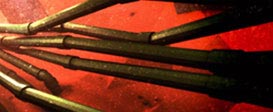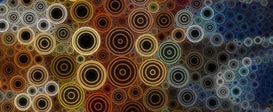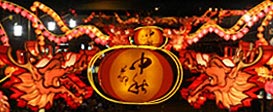Interactive Massive Model Rendering
![]() Full Conference
Full Conference ![]() One-Day Full Conference
One-Day Full Conference
Wednesday, 10 December, 08:30 - 17:30
Room 306
Level: Intermediate
Users consistently try to manage and display more data than any computing system allows, especially when they work with 3D models for films, games, CAD systems, medical imaging, seismic exploration, information spaces, etc. In this course, seven international researchers and practitioners present software and hardware strategies for real-time visualization of and interaction with massive models.
Even when they work with higher-performance computing systems, game and entertainment producers use a set of techniques to limit model size during real-time visualization and interaction sessions. However, polygon decimation, texture maps, and related techniques do not readily apply to domains where high levels of visual accuracy are essential. Such models can contain a billion polygons or voxels and millions of individually selectable objects.
Although the course addresses ray tracing and rasterization, its objective is to explore a systems approach. It focuses on system integration and optimization techniques that let extract higher performance, such as:
- Software techniques to overcome performance and memory size limitations (kd-trees, occlusion culling, LODs, multi-threaded programming, memory-mapped files, display lists, cache coherence).
- Computing system architecture (parallel-processor architectures, single and multi-GPU hardware, thin client, hardware occlusion culling, cell computers, multi-core CPUs).
- Scalable system architecture (preprocessing, large user communities, model-configuration management, network transfer of basic geometry, variable form-factor display devices).
- Practical implementation issues.
The course summarizes overall performance-improvement strategies, gives examples of industrial and academic approaches using both rasterization and ray tracing, and concludes with real-world experience in a commercial environment.
Prerequisites
General knowledge of the difference between ray tracing and rasterization.
Familiarity with computing-system architecture, graphics hardware, and parallel processing.
Intended Audience
This course is intended for users of complex models and practitioners who build real-time 3D applications. The techniques are applicable to any community that commonly reduces model detail (games, for example) or works only with model chunks (CAD, for example).
Instructors
Marco Agus
Center for Advanced Studies, Research and Development in Sardinia
Enrico Gobbetti
Center for Advanced Studies, Research and Development in Sardinia
Philipp Slusallek
Universität des Saarlandes
Andreas Dietrich
NVIDIA Research
Fabio Marton
Center for Advanced Studies, Research and Development in Sardinia
Renato Pajarola
Universität Zürich
Sung-eui Yoon
Korea Advanced Institute of Science and Technology
Instructor Bios
Enrico Gobbetti
Enrico Gobbetti is the founder and director of the Visual Computing group at the Center for Advanced Studies, Research, and Development in Sardinia (CRS4). At CRS4, he developed and managed a graphics research program supported through industrial and government grants. His research interests span many areas of computer graphics. His most recent contributions include a new breed of coarse-grained adaptive multiresolution techniques for processing and rendering large-scale geometric models. He holds an engineering degree (1989) and a PhD degree (1993) in computer science from the Swiss Federal Institute of Technology in Lausanne (EPFL).
Philipp Slusallek
Philipp Slusallek is professor of computer graphics and digital media at SUniversität des Saarlandes. Before joining Universität des Saarlandes, he was visiting assistant professor at Stanford University. He received a Diploma/MSc in physics from the Universität Tübingen and a Doctor/PhD in computer science from the Universität Erlangen-Nürnberg. He has published and taught extensively, including courses on real-time ray tracing at SIGGRAPH 2005 and SIGGRAPH 2006. He is the principal investigator for the OpenRT project to establish real-time ray tracing as an alternative technology for interactive and photorealistic 3D graphics. Recently, he co-founded inTrace, a spin-off company that commercializes real-time ray tracing technology.
Andreas Dietrich
Andreas Dietrich received a masters degree (Dipl.-Technoinform.) in computer science from Technische Universität Kaiserslautern in 2001. Until 2007, he was a research assistant and PhD student at the Computer Graphics Group at Universität des Saarlandes. He is now working at NVIDIA Research, where his work focuses on GPU ray tracing, real-time ray tracing for VR applications, natural phenomena rendering, and interactive massive model visualization.
Fabio Marton
Fabio Marton is a researcher in the Visual Computing group at the Center for Advanced Studies, Research, and Development in Sardinia (CRS4). He holds a Laurea (MSc) degree (1999) in Computer Engineering from the Università degli Studi di Padova. His current research interests include out-of-core data processing, multiresolution modeling and time-critical rendering. He has participated as a key developer in industrial and research projects that have led to the development of state-of-the-art tools for large-scale model rendering. He has co-authored papers in major international refereed journals and conferences, including SIGGRAPH, Eurographics, and IEEE Visualization. Before joining CRS4, he worked on 3D scanning at LMTT Padova and Optonet Brescia.
Renato Pajarola
Renato Pajarola received a Dipl. Inf-Ing ETH and a Dr. sc. techn. degrees in computer science from the Swiss Federal Institute of Technology (ETH) Zürich in 1994 and 1998 respectively. Following his dissertation, he was a post-doctoral researcher and lecturer in the Graphics, Visualization & Usability (GVU) Center at Georgia Institute of Technology. In 1999, he joined the University of California, Irvine as an assistant professor and founded the Computer Graphics Lab there. Since 2005, he has been leading the Visualization and MultiMedia Lab at the Universität Zürich as an associate professor in the Department of Informatics. His research interests include real-time 3D graphics, multiresolution modeling, point-based graphics, interactive scientific visualization, remote and parallel rendering, compression, and interactive 3D multimedia. He has published a wide range of some 50 internationally peer-reviewed research articles in top journals and conferences. He frequently serves on program committees, such as the IEEE Visualization Conference (2004-06), Pacific Graphics (2002-03,07-08), and EuroVis (2001,2006-08), and he has co-chaired the papers program of the 2007 and 2008 IEEE/Eurographics Symposium on Point-Based Computer Graphics. He also received Eurographics (2005) and IADIS (2007) Best Paper Awards. He is a member of the ACM, ACM SIGGRAPH, and the IEEE Computer Society.
Sung-eui Yoon
Sung-Eui Yoon is an assistant professor at the Korea Advanced Institute of Science and Technology. He received the BS and MS degrees in computer science from Seoul National University in 1999 and 2001 respectively. He received his PhD degree in computer science from the University of North Carolina at Chapel Hill in 2005. He was a postdoctoral scholar at Lawrence Livermore National Laboratory. His research interests include scalable graphics and geometric algorithms, interactive rendering, geometric problems, and cache-coherent algorithms and layouts. He has published more than 20 technical papers in top journals and conference related to visualization and graphics. He is a member of the ACM SIGGRAPH, IEEE & IEEE Computer Society, and Eurographics.









